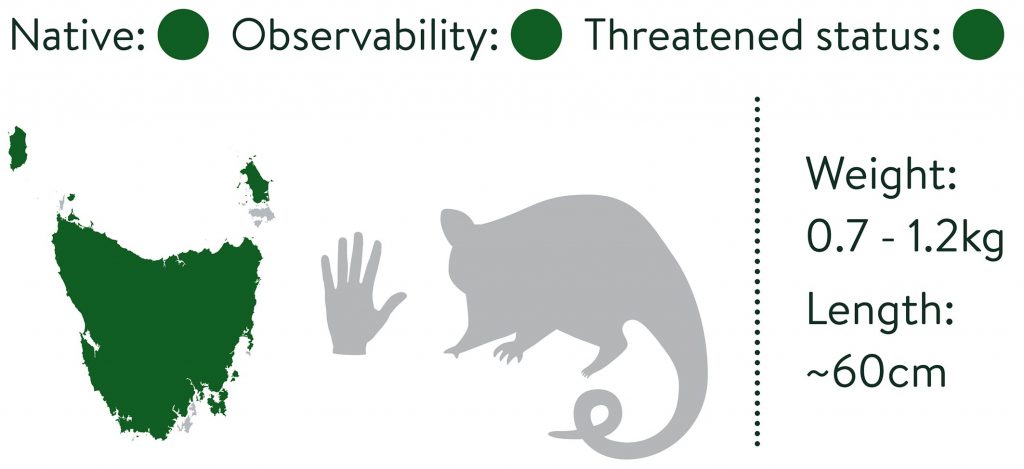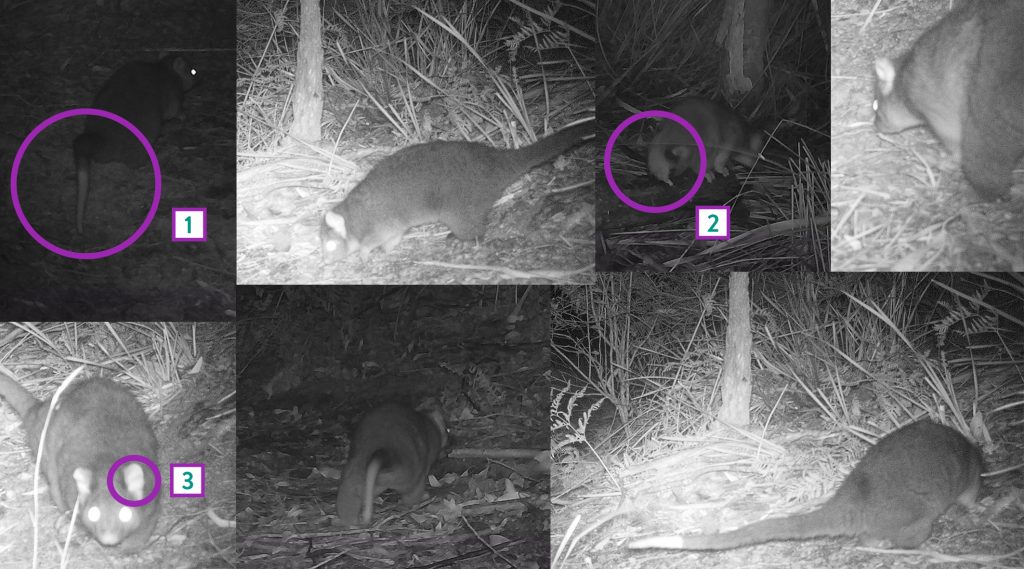Pseudocheiridae | Pseudocheirus peregrinus
Ringtail’s were once very common in Tasmania. Between 1923 and 1955, 7.5 million animals were hunted for their fur. Populations are still recovering from past commercial harvesting and persecution.

Lifestyle
Ringtail’s are shy and strictly nocturnal. They may either use a tree hollow or build a spherical drey (nest) among dense vegetation to rest in during the day. Ringtails are semi-social; individuals spend more time alone during spring and summer but often nest together in a family group or male-female pair over winter. Home ranges average around 0.5-1 hectare. Joey’s are usually born between May and August, leave the pouch after about 4 months, leave their mums after 7 months, and can live for 4-5 years in the wild.

Key identifying features
Tapering prehensile tail that is naked underneath and has a distinctive white tip (1). Tail may be curled (2) or held straight when being used for balance. Grey to black coat with white underbelly. Sometimes an orange-brown shade on the legs and along the length of the tail. Large round ears (3) with white patches behind. May be recorded carrying sticks and leaves using its tail when building a nest (drey).
Similar species
Common brushtail possum – Larger body size; dark coloured fluffy tail; more pointed ears; absence of white ear patches.
Habitats
Forest, woodland, shrubland, parks and gardens. Prefers dry forests and dense areas of tea-tree.
Diet
Foliage, flowers and fruits of trees and shrubs, especially eucalypts. Demonstrates ‘caecotrophy’, possums eat a special kind of their own highly nutritious faeces.
Threats
Habitat clearance, removal of hollow-baring trees, predation by cats & dogs.
